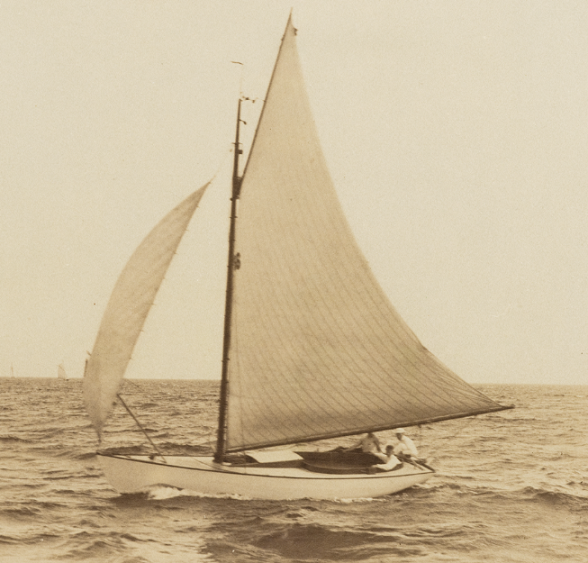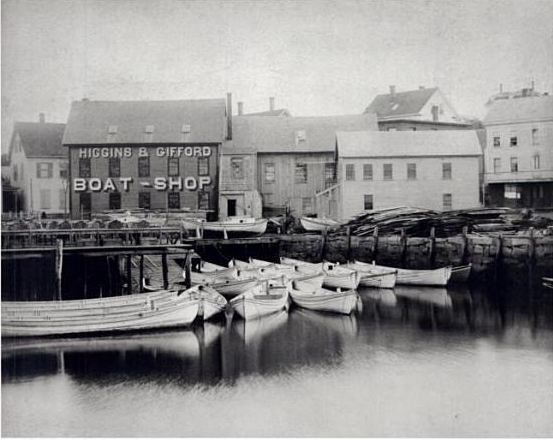As we progress to the turn of the century much of the fleet of sailing craft had there rigs outboard extending way beyond the bow and stern. A hazardous rig proving very difficult to manage, and handle with nominal crew. Through the need for a more manageable sail plan, an easy to use inboard rig was developed and introduced. Proving very popular the rig was used primarily for “Knocking-About-The-Harbor.” This newly developed rig would become the fore bearer of most of today’s sailing fleet.
In 1892, while Andrew Carnegie, and Henry Clay Frick of Carnegie Steel were forcing the unions out of their plants, Higgins & Gifford’s Boat Shop were about to finish construction of two gaff-rigged sloops that would launch the era of the Knockabout Class of small sailboats.
Nancy and Jane were sisterships built at Higgins & Gifford Boat Shop, of Gloucester, Massachusetts. The brainchild of Henry Taggard, who previously sailed on catboats, cutters and small sloops, none of which suited his needs. Taggard desired a small 21′ waterline, no bowsprit yacht that could make the ten mile trip out to Halfway Rock and back in a blow. George Stewart of Stewart & Binney drew the lines.

Nancy was launched in the Spring three weeks ahead of Herman Parker’s Jane, Nancy was indeed the first Knockabout sloop ever built.
It was thought at the time that a one design class would inhibit competition, so the only restrictions for this newly developed Knockabout Class was 21′ of waterline. Nancy and Jane were so well received that, by the turn of the Century some of the best designers in the world were producing boats. N.G. Herreshoff’s 1896 Cock Robin was probably the most famous of the 21′ WL Knockabouts, proving to be practically invincible on the race course at the time.

Without limits on sail area and overall length, the Knockabout’s design criteria almost killed the class. Competition produced some extreme models. Burgess in 1902 designed a 21′ water-line 39′ 10″ version with 950 sq ft of sail area with 3’6″ draft, with her heavily ballasted centerboard up… she was called Little Haste. She was so extreme and fast, no one wanted to build a boat to compete with her.
By 1905 The Beverly Yacht Club, Monument Beach, Buzzard’s Bay, proposed new rules for the class, giving the less extreme types a chance in the racing. The restrictions submitted called for four classes, the 25′, 21′, 18′, and 15′(fifteen-Footer began in 1903 with little interest due to being to small to follow the race circuit) Limitations were proposed to include restrictions on overall length, sail area, girth, draft, ballast, and freeboard.

The last racing of the 21′ foot knockabout as a class was 1909. Frederick L. Gray of the Boston Yacht Club offered a cup for the winner in hopes of reviving interest. Five yachts participated, and the winner was “Aspinet” Mr. Gray would go on to offer another cup the following year, but there was little interest and no class was provided for the Knockabout’s.
Although Mr. Taggard would sell Nancy, and build two new boats, he eventually ended up buying back Nancy preserving once again her legacy. Jane on the other hand was kept by Mr. Parker up until 1909. Not wanting to sell or restore her the boat was scuttled, but before she was lost forever, Mr. Parker made a small detailed model of his yacht and presented it to the Corinthian Yacht Club which remained one of the club’s prized yachting souvenirs.

